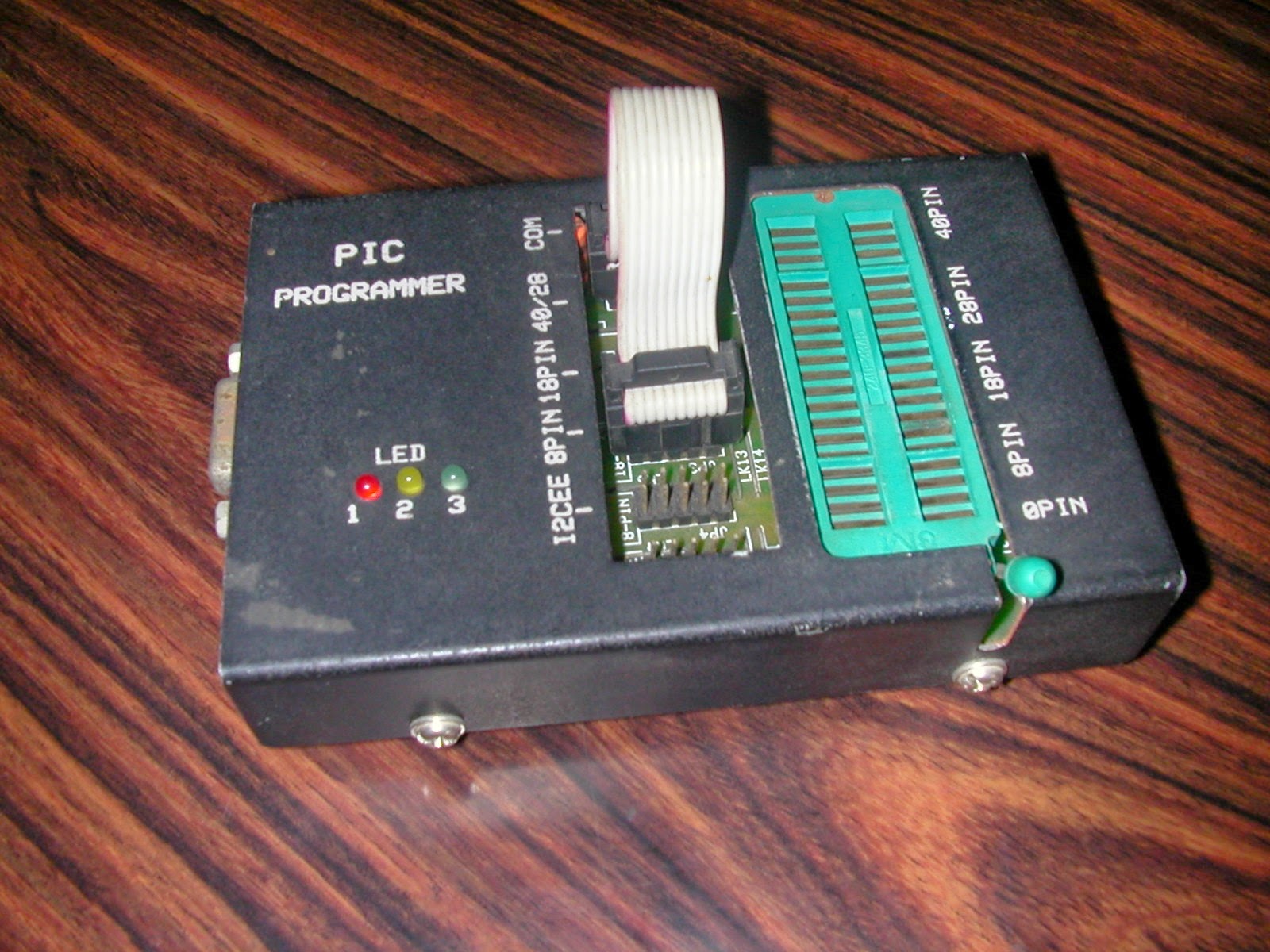The HF dual VFO DDS consists of a PIC16 F628A
micro controller and an AD9850 DDS module. The PIC16F628A programs the AD9850
DDS module with the frequency, as selected by the encoder. The AD9850 module
has all SMD filter components on board and delivers a well filtered pure sine
wave output of 1 volt peak to peak. Though the circuit is designed for 12
volts, it is preferable to use 9 volts as power supply for the pcb. The encoder is already wired to the pcb. There are three push buttons PB-1,PB-2 & PB-3.
 |
| HF Dual VFO DDS |
The PB-1 is for fast tuning in kHz rate and
the same is wired to the switch in the encoder. When the encoder switch is
pressed once the cursor moves to 10 KHz position and gets locked. When the
encoder is rotated the frequency varies in steps of 10 KHz. Again when the
encoder is pressed the cursor moves to its original position and the frequency
varies in steps of 0.1 KHz. Pressing the PB-1 toggles step from previous state.
The switch PB-2 is for selecting various Ham
bands directly. By keep pressing the PB-2 switch, if the encoder is rotated
clock wise, the Ham bands from 1.8 Mhz to 28Mhz are selected in steps. This
makes the operation quite easy to move from one band to other. If the encoder is continuously rotated in clock
wise direction it cycles between 1.8 MHz to 28 MHz.
The third switch PB-3 is for VFO selection.
By pushing the switch selects the VFO – A or VFO- B alternatively. PB-2
& PB-3 are non latching type.
The DDS programming automatically takes care
of subtracting the VFO frequency from “IF” for operation below 10 Mhz.
Similarly the adding of VFO frequency to “IF” is done by soft ware for
operation above 10 Mhz. For example
if 7010 KHz is selected and displayed by the Liquid crystal display the actual out
put of the DDS Module will be 2990 KHz and if the display shown is 14000 KHz
then the output of the DDS will be 4000KHz.
A 0.1 mfd
capacitor is provided in the pcb at the out put for ac coupling. A
1N4007 diode is provided in the positive side of the supply to protect the DDS
from wrong polarity connection. A 10 K
pot is provided on board for contrast adjustment if required. The VFO may need
a buffer in the out put of DDS module based on the Exciter requirements.

















